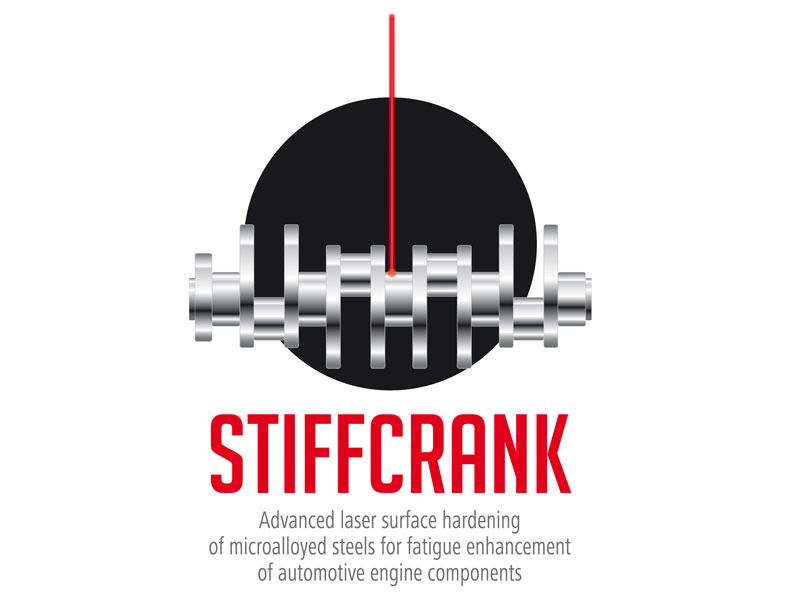
Sidenor I+D participates in an European project to develop a new laser-based surface methodology to improve fatigue strength of crankshafts in automotive industry
- STIFFCRANK has a budget of 1,7M€ and will last 3 and a half years. The project has received funding from the European Commission, through the Research Fund for Coal and Steel.
- In the short term, the results will have an impact on companies that use selected microalloyed steels for applications where fatigue is a stringent condition for safe and longer operation durability of products.
Sidenor I+D participates as a partner in the STIFFCRANK Project, led by AIMEN Technology Centre (Vigo, Spain), that has been launched on July 2017.
The project main objective is to develop a new laser-based surface hardening (LSH) methodology for improving fatigue resistance, through the generation of homogeneous and predictable surface hardened layers in microalloyed and alloyed-steels.
The achievement of this target will require improved understanding of the link between the distribution of residual stresses in the subsurface and the resultant microstructure after laser surface hardening techniques, with respect to the resultant fatigue strength of specimens and crankshaft components, and the way the laser hardening process affects to these properties.
The connection between the material responses to the laser processing conditions will be specifically considered. Accordingly, Sidenor will supply to the consortium current standard steel grades for the production of forged crankshafts (one microalloyed grade and one quenching and tempering grade), and an additional microalloyed grade with improved strength, as a potential future standard for high performance applications.
As a result, clear guidelines will be created to optimize the fatigue strength of engineer components subjected to high cyclic loading conditions, optimizing the product development and the production process. These guidelines will be directly applicable for further research in order to optimize steel grades and LSH techniques respect to fatigue.
In the short term, the results are expected to have an impact on companies from sectors that apply selected microalloyed steels and where fatigue is a stringent condition for safe and longer operation durability of products. This covers sectors such as automotive and machine industry but not only, as offshore/onshore applications and power energy generation will be potentially benefited too.
Main Innovations
Among the main innovations, it should be highlighted the modified methods of laser surface hardening for high fatigue strength of microalloyed steels by using the potential of advanced laser beam technology to improve homogeneity of hardness and tailor the laser energy distribution onto the steel substrate.
Consortium
STIFFCRANK has a budget of 1,7M€ and will last 3 and a half years. The project has received funding from the European Commission, through the Research Fund for Coal and Steel.
The responsibility of Sidenor I+D in the consortium as a partner will be to supply the industrial materials for the manufacturing of the components and specimens, as well to collaborate in the characterization and evaluation of the different variants generated along the project (by means of standard technologies considered as reference and through the advanced laser route).
The other three members of the consortium are:
AIMEN (Spain), the leader of the project, and thus responsible of the project coordination, will also be in charge of the development of one of the two Advanced Laser processing lines included in the project. AIMEN will study the optimum parameters of the laser process, investigating the link between the metallurgy, the hardness and the residual stress profile in relation with the thermal parameters, in order to enhance the fatigue strength. Finally, it will simulate (FEA) the laser processing to tailor the energy delivered
Luleå University of Technology (Sweeden) will be in charge of the other Advanced Laser processing line included in the project. Advance Laser Surface Hardening will be investigated using specific technics and complementing to AIMEN on defining the optimum conditions for the process. LTU will also collaborate on simulation activities for determination of the optimum trajectory of the laser beam.
University of Kassel (Germany) will measure the residual stress profile below the surface on laser surface hardened samples and crankshafts. It will assess the characteristic features of the hardness in relation to the residual stress profile, identifying any link between microstructure, hardness profile and residual stress distribution.

